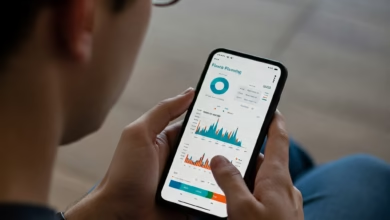Complete guide with everything about the Cardano crypto
Learn what the Cardano digital currency is

Are you hearing buzz about cryptocurrencies beyond Bitcoin and Ethereum? Perhaps you’ve stumbled upon the name Cardano and wondered what it’s all about. You’re not alone! This comprehensive guide will break down everything you need to know about Cardano (), from its origins and technology to its potential and how you can get involved. We’ll cut through the jargon and explain it in a way that’s easy for anyone to understand, even if you’re new to the world of digital currencies.
What is Cardano and Why is it Important?

Cardano is a third-generation cryptocurrency and blockchain platform that aims to be a more sustainable, scalable, and interoperable alternative to earlier blockchains like Ethereum. Founded by Charles Hoskinson, one of the co-founders of Ethereum, Cardano takes a research-driven approach to development, meaning every change and upgrade is backed by peer-reviewed academic research. This scientific rigor sets it apart in the often fast-paced and less structured world of crypto.
Cardano’s importance lies in its ambition to solve some of the key challenges facing the blockchain industry:
- Scalability: The ability to handle a growing number of transactions efficiently without increasing fees or slowing down the network.
- Interoperability: Allowing different blockchains to communicate and exchange value seamlessly.
- Sustainability: Utilizing energy-efficient consensus mechanisms that are better for the environment.
Understanding Cardano’s Unique Technology: Ouroboros and Beyond
At the heart of Cardano is its unique proof-of-stake (PoS) consensus protocol called Ouroboros. Unlike Bitcoin’s proof-of-work (PoW) system, which requires significant computational power, Ouroboros selects leaders to validate transactions based on the amount of Cardano they “stake” or lock up. This makes the network significantly more energy-efficient and environmentally friendly.
Beyond Ouroboros, Cardano’s architecture is built in layers:
- Cardano Settlement Layer (CSL): This layer is responsible for handling transactions.
- Cardano Computation Layer (CCL): This layer is designed to support smart contracts, which are self-executing agreements written in code.
This layered approach provides flexibility for future upgrades and governance.
The Potential of Cardano: Smart Contracts and Decentralized Applications (dApps)

Like Ethereum, Cardano enables the development of smart contracts and decentralized applications (dApps). This opens up a wide range of potential use cases, including decentralized finance (DeFi), non-fungible tokens (NFTs), supply chain management, and digital identity solutions.
Cardano’s commitment to formal verification in its smart contract development aims to create more secure and reliable dApps, potentially attracting developers and users looking for a robust platform.
Investing in Cardano (): What You Need to Know
If you’re considering investing in Cardano’s native cryptocurrency, , it’s crucial to understand the risks involved in any cryptocurrency investment. The price of can be volatile and influenced by various factors, including market sentiment, technological advancements, and regulatory developments.
Before investing, consider the following:
- Do your own research (DYOR): Don’t rely solely on hype or social media. Understand Cardano’s technology, its goals, and its competition.
- Assess your risk tolerance: Only invest what you can afford to lose.
- Understand where to buy and store : Numerous cryptocurrency exchanges offer , and you’ll need a secure wallet to store your holdings.
Staking Cardano: Earning Rewards on Your

One of the attractive features of Cardano is the ability to stake your and earn rewards. By delegating your to a stake pool, you participate in securing the network and receive passive income in return. This process doesn’t require you to give up custody of your .
Staking can be a great way to potentially grow your holdings over time, but it’s essential to research and choose reputable stake pools.
Cardano’s Governance: Shaping the Future of the Network
Cardano is continuously evolving, and its governance model is designed to be decentralized and community-driven. Through initiatives like Project Catalyst, holders can propose and vote on projects that will receive funding from Cardano’s treasury. This empowers the community to actively participate in the development and direction of the platform.
Cardano vs. Ethereum: Understanding the Differences

Cardano is often referred to as an “Ethereum killer” due to its ambition to improve upon some of Ethereum’s limitations. While both platforms support smart contracts and dApps, there are key differences:
- Development Approach: Cardano emphasizes peer-reviewed academic research, while Ethereum’s development has historically been more iterative.
- Consensus Mechanism: Cardano uses the energy-efficient Ouroboros proof-of-stake, while Ethereum has transitioned to proof-of-stake with its Merge upgrade.
- Layered Architecture: Cardano’s separation of the settlement and computation layers offers potential advantages in terms of scalability and future upgrades.
Both platforms have their strengths and weaknesses, and the “winner” of the smart contract platform race is still to be determined.
Getting Started with Cardano: Resources and Community
If you’re interested in learning more about Cardano, here are some valuable resources:
- Cardano Foundation: The official foundation overseeing the development and adoption of Cardano.
- IOHK (Input Output Hong Kong): The research and development company behind Cardano.
- Emurgo: The commercial arm of Cardano, focused on adoption and enterprise solutions.
- Cardano Community: A vibrant and active community of developers, users, and enthusiasts.
Exploring these resources will provide you with deeper insights into the Cardano ecosystem.
The Future of Cardano: What to Watch For

Cardano continues to evolve with ongoing research and development. Key areas to watch include:
- Further Scalability Solutions: Cardano is working on various scaling solutions to handle increased transaction volume.
- Interoperability Efforts: Connecting Cardano with other blockchains is a key focus.
- Adoption of dApps and Use Cases: The growth of the Cardano ecosystem will depend on the development and adoption of practical applications.
Staying informed about these developments will help you understand the long-term potential of Cardano.
Cardano is a fascinating and ambitious cryptocurrency project with a strong focus on research, sustainability, and scalability. While investing in and participating in the Cardano ecosystem involves risks, understanding its technology, potential, and community is crucial for anyone interested in the future of blockchain technology. By staying informed and doing your own research, you can navigate the world of Cardano with greater confidence.





